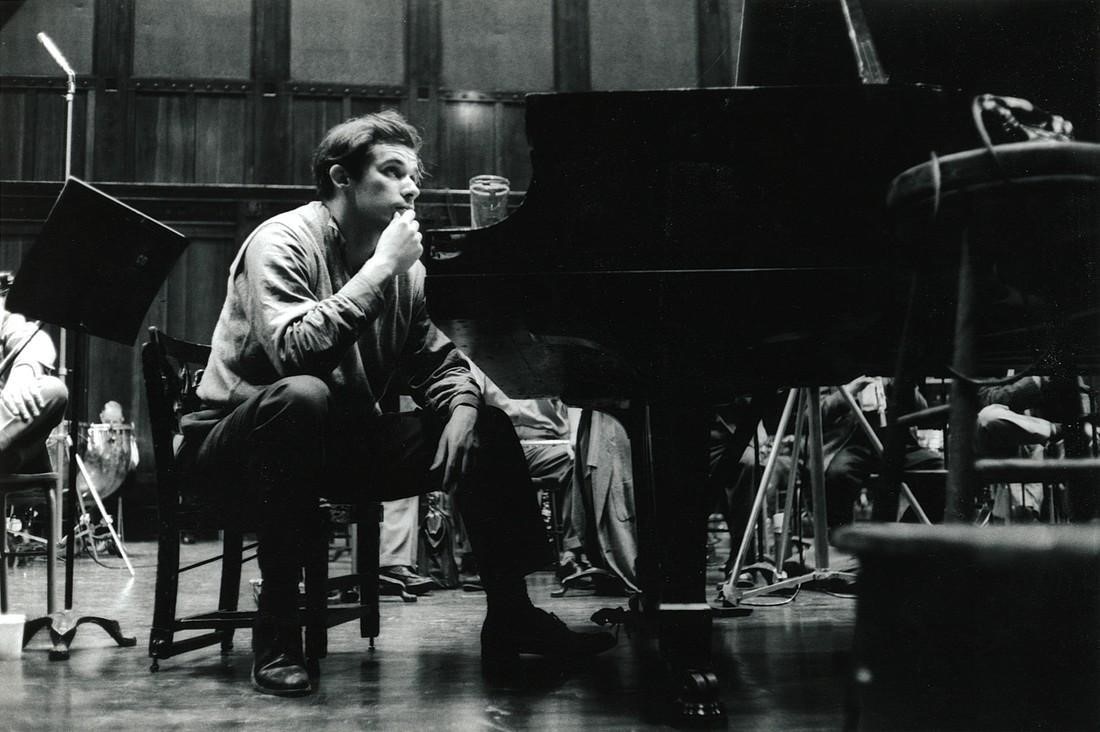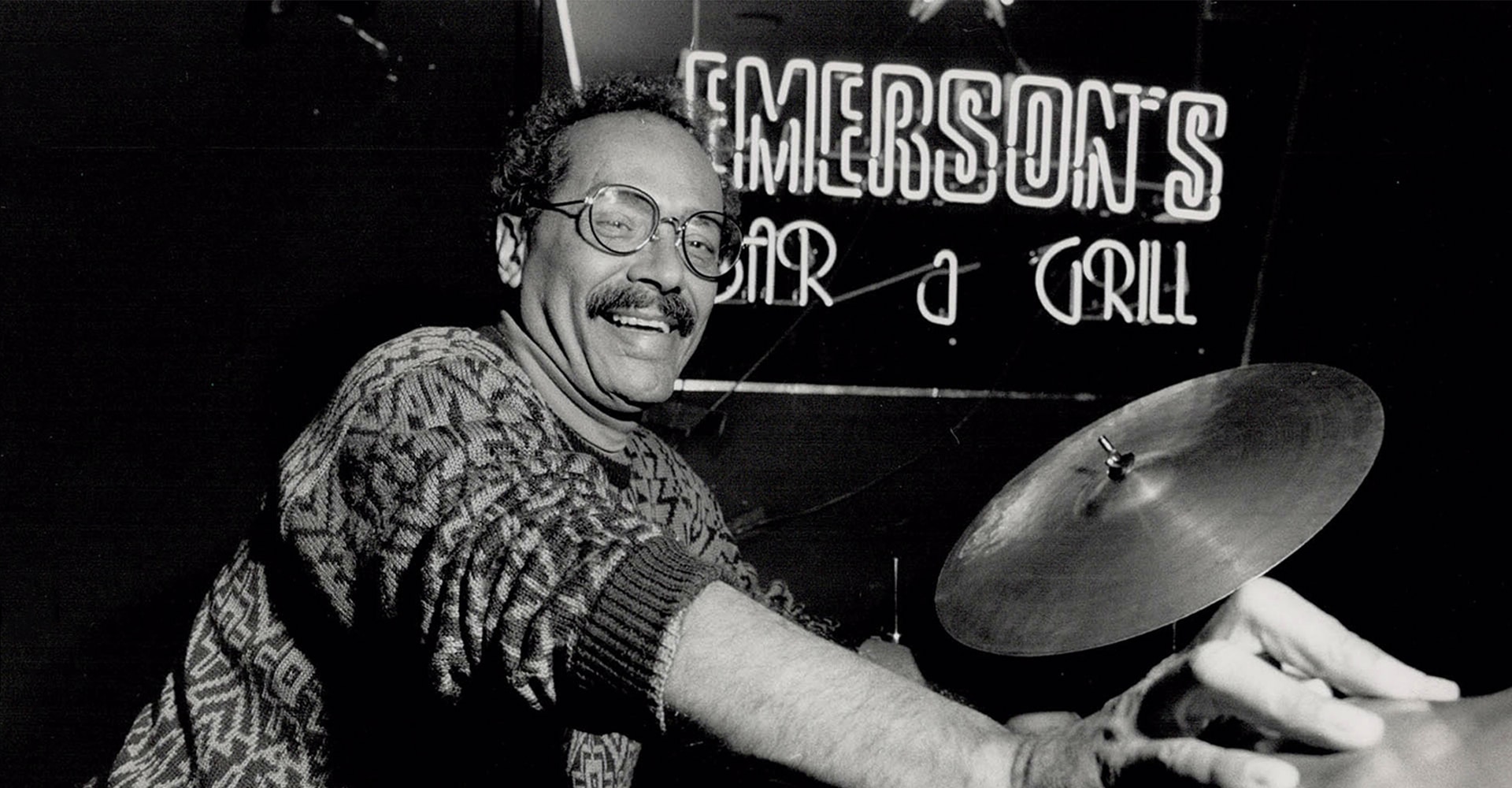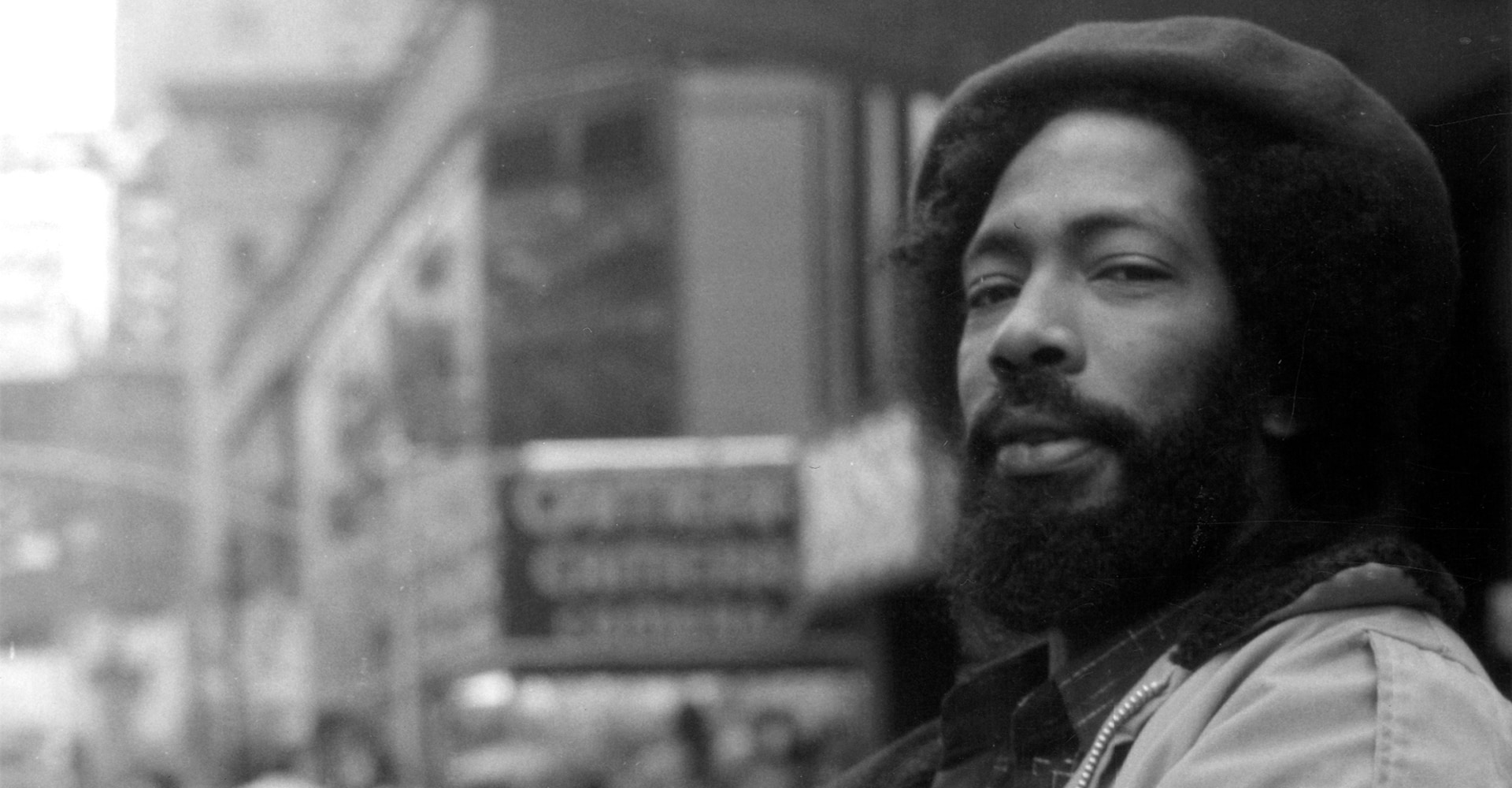
One of the most celebrated and virtuosic jazz pianists of the twentieth century, Oscar Peterson (1925–2007) wowed the world with his deft and nimble playing. Performing for US Presidents and royalty alike, Peterson was a prodigious performer, releasing as many as four records in a single year.
During his multi-decade career, Peterson performed with jazz greats such as Louis Armstrong, Ella Fitzgerald and Dizzy Gillespie. Fellow jazz pianist Count Basie said of him, "Oscar Peterson plays the best ivory box I've ever heard."
Although his nimble fingers led him to perform on iconic stages such as Carnegie Hall to Massey Hall, Peterson also faced discrimination and anti-Black racism throughout his career. But Peterson refused to let such attitudes affect him or his playing. As he was fond of saying, "I've always said that talent of any kind comes in a variety of colours — black, white, brown, yellow, tall, short, fat, thin, monster-like or gentle."
Early Days
Born in Montreal in 1925, from a young age, Oscar Peterson loved music. From as young as five, he played the trumpet. He performed in his family’s band, which was led by his father, Daniel Peterson, and the group performed their local neighborhood of St. Henri, Montreal.
At age seven, Oscar developed tuberculosis, a serious illness that weakens the lungs. Once Oscar recovered, his father switched Oscar from the breathing-intensive trumpet to the piano. Oscar was taught by his older sister Daisy, who grew to become one of the most respected piano teachers in Montreal. She saw his talent and introduced him to concert pianist Paul de Marky, who would become Oscar’s music teacher.
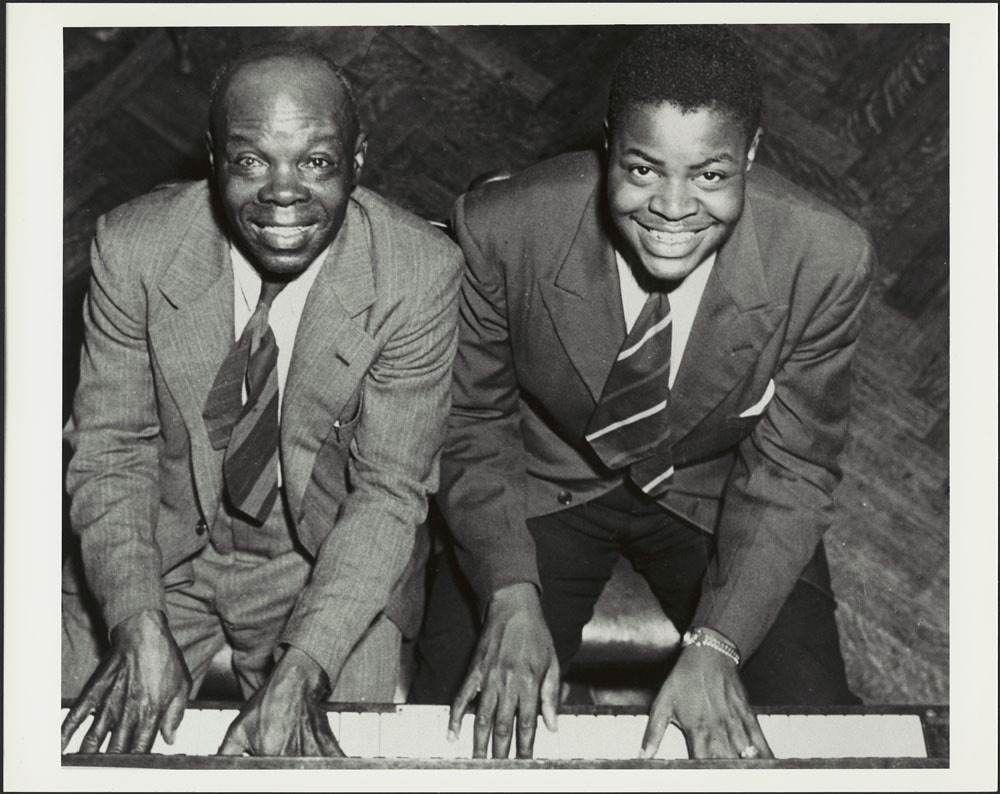
Oscar Peterson and his father, Daniel, playing piano, c. 1940s.
Photo by D.C. Langford, courtesy of the Library and Archives Canada / e011073129
A Rival to Art Tatum
Oscar’s sister Daisy saw immense potential in her younger brother and encouraged him to enter an amateur music contest when he was 14 years old. Oscar entered and won the $250 prize. He began playing in his school’s assembly hall to show off his piano skills to his classmates.
To teach his son a lesson in humility, his father played Oscar a record of the song “Tiger Rag” as performed by American jazz piano legend, Art Tatum (1909–1956). Oscar gave up piano for two months after hearing the record, depressed because he was convinced he would never be able to top Art Tatum’s skills on the piano.
Listen: Tiger Rag
Art Tatum (1909–1956) is often considered one of the greatest jazz pianists of the 20th century. Tatum attended music schools from a young age, aided by his sense of perfect pitch and naturally nimble fingers.
This version of "Tiger Rag", a classic jazz song, was recorded by Art Tatum in 1933 and was one of the jazz legend’s first professional recordings.
The complexity of Tatum's playing in "Tiger Rag" had a profound influence on Oscar Peterson when he first heard the song as a child. He feared he would never become as skilled a piano player. He needn't have worried.
This online exhibition uses third-party applications including Spotify and YouTube. Check with your organization’s web administrator if you are unable to access content from these channels in the exhibition.
A Montreal Musician
In 1942, when Oscar was 17 years old, he was offered a position with the Montreal-based Johnny Holmes Orchestra and he decided to drop out of school to pursue music full time.
Under Holmes’ instruction, Oscar improved his playing and soon became prominent enough to head his own musical trio. He joined with bassist Austin “Ozzie" Roberts and drummer Clarence Jones and they soon became headliners in Montreal’s music scene.
I can remember sitting up one night thinking that there really was no way for me to make a decent living being a jazz artist. And happily, of course, I've proven myself wrong.
— Oscar Peterson
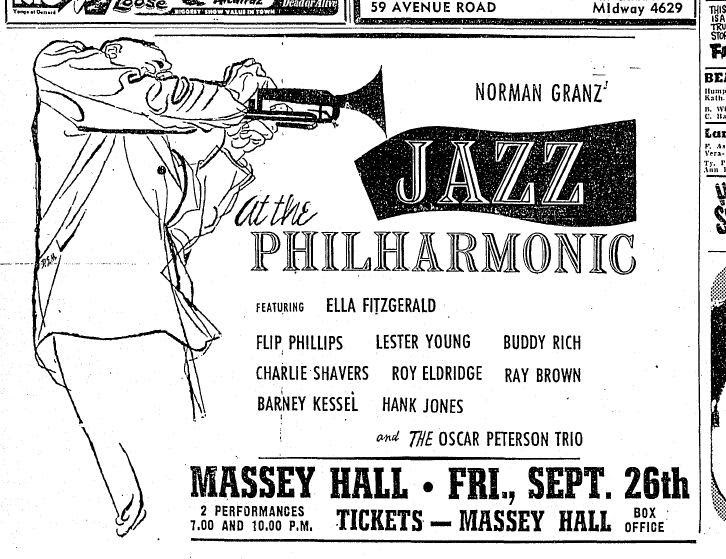
A 1950s Toronto newspaper ad for Norman Granz’s touring “Jazz at the Philharmonic” music series, featuring world renowned jazz performers including Oscar Peterson.
An International Jazz Sensation
Word of Peterson’s skills on the piano quickly spread. In 1949, he was invited to participate in “Jazz at the Philharmonic”, a series of jazz concerts and recordings. Performing at New York City’s Carnegie Hall, Peterson’s performance helped launch his international career. He became a regular performer for the series and toured around the world with jazz legends including Ella Fitzgerald, Dizzy Gillespie, Charlie Parker, Buddy Rich, and Roy Eldridge.The jazz series even brought him back to Canada, performing at Toronto’s Massey Hall.
Listen: Jazz At The Philharmonic
Listen to Oscar Peterson perform at the 1949 "Jazz at the Philharmonic" concert performed at New York City's Carnegie Hall.
The Jazz at the Philharmonic concert series lasted from 1944 to 1983 and featured among the most celebrated jazz musicians of the age, including Nat King Cole, Billie Hoiday, Gene Krupa, Charlie Parker, and Ella Fitzgerald.
Norman Granz (1918–2001) was the man behind the concert series. A foundational figure in jazz music in the United States, Granz was also a staunch advocate in desegregating music performances in the U.S., often fighting for the rights of Black musicians and artists who performed with the series.
Granz recorded many of the Jazz at the Philharmonic concerts, capturing and preserving some of the most noteworthy jazz performances of the twentieth century.
This online exhibition uses third-party applications including Spotify and YouTube. Check with your organization’s web administrator if you are unable to access content from these channels in the exhibition.
The Oscar Peterson Trio
With an established reputation as a virtuoso jazz pianist, Peterson often played with bassist Ray Brown and guitarist Herb Ellis, a group that soon became known as the Oscar Peterson Trio. The three musicians toured internationally and also played as accompanists for legendary jazz performers.
You can hear the Oscar Peterson Trio accompanied both Ella Fitzgerald and Louis Armstrong on the albums Ella and Louis and Ella and Louis Again. Oscar Peterson also played piano accompaniment on albums by Billie Holiday, Fred Astaire, Benny Carter, Roy Eldridge, Lester Young, Stan Getz, Buddy DeFranco and many others.
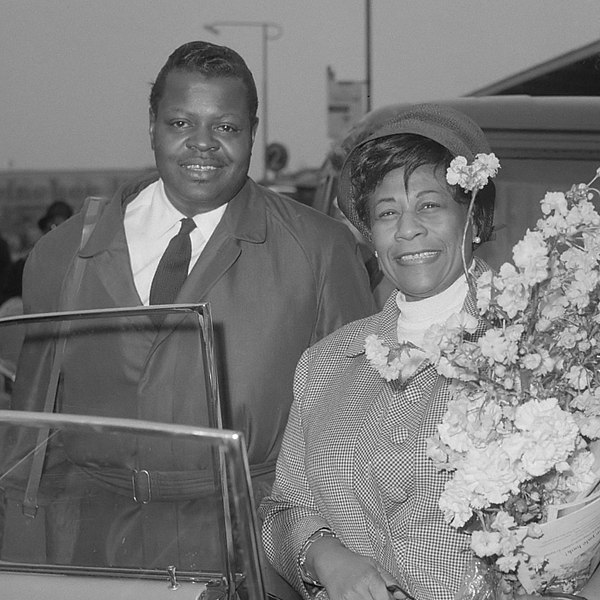
Oscar Peterson with jazz legend Ella Fitzgerald, April 24 1964
Photo by Hugo van Gelderen, courtesy of the Nationaal Archief of the Netherlands
Listen: Ella and Oscar
To me, he’s like a brother and a friend, and one of the greatest you'll ever meet.— Ella Fitzgerald, speaking about Oscar Peterson
This online exhibition uses third-party applications including Spotify and YouTube. Check with your organization’s web administrator if you are unable to access content from these channels in the exhibition.
Oscar's Shoes
Worn on concert and club stages around the world, these graceful and elegant black suede shoes were Oscar Peterson's favourite and signature performance shoes.
Oscar took impeccable care of these shoes, carefully putting them on before a concert. Once a pair began to wear out from being pressed against the piano pedals during a lyrical ballad, or passionately played while stomping out his jazz rhythms, Oscar would make his way to shoemakers Foster & Son in London, England to buy another pair of the same style.
Oscar's wife, Kelly Peterson, said during the induction of these shoes into Toronto's Bata Shoe Museum in May 2008, "...they exemplify the dignity and grace with which Oscar always carried himself, and the excellence of his playing."
This online exhibition uses third-party applications that may not be compatible with your current version of browser. Check with your organization’s web administrator if you are unable to access content from these channels in the exhibition, or try to access this webpage from another browser.
Keyboard controls: Use arrow keys to rotate the object and page up/page down to zoom.
These shoes have seen the great music and performance halls around the world. Peterson made sure to take great care of each pair and wore them for almost all of his performances. Collection of the Bata Shoe Museum, Toronto. Digital rendering commissioned by Heritage Toronto.
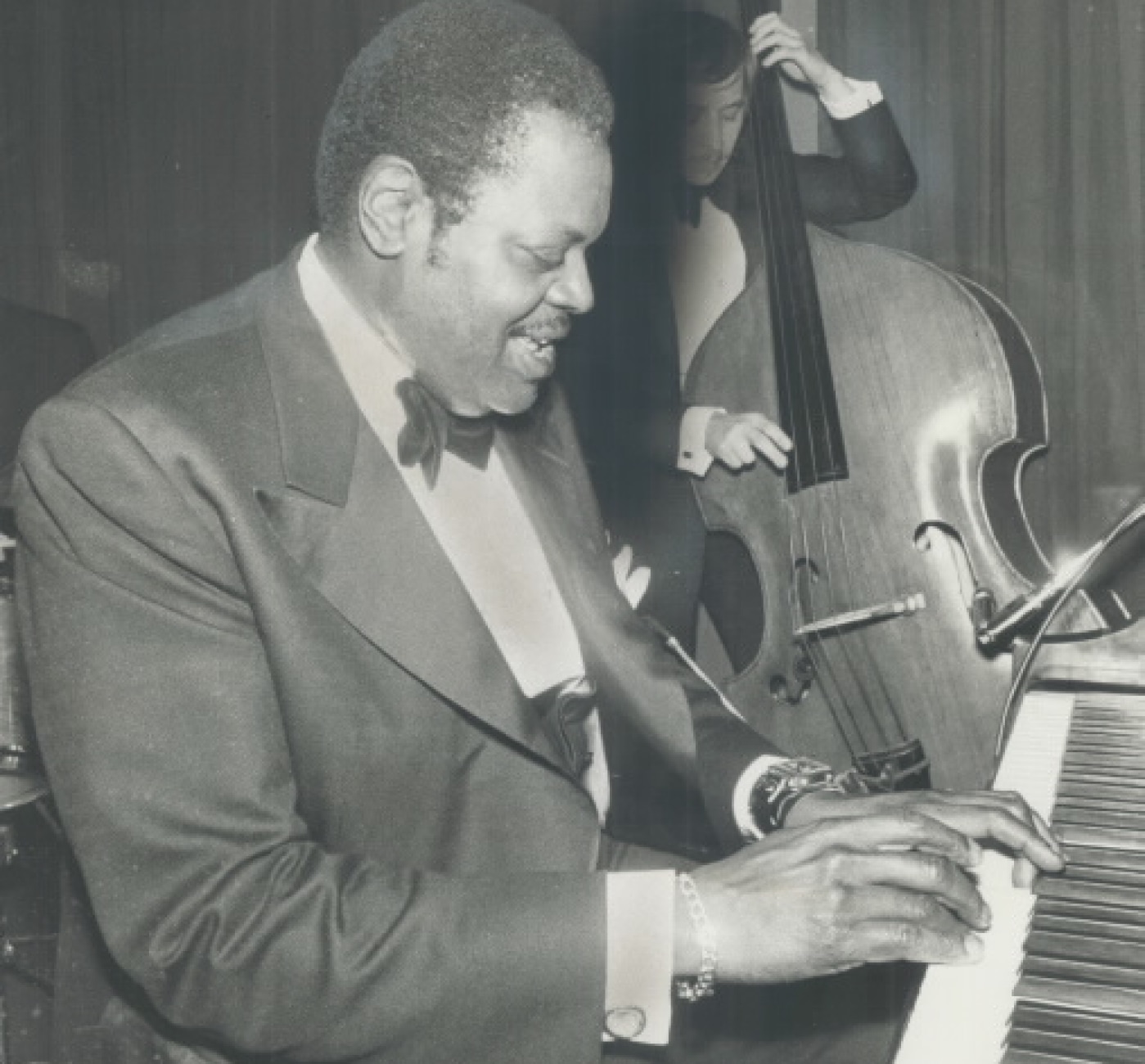
Oscar Peterson at the Town Tavern on Yonge Street. Peterson was a staple jazz performer at the Town Tavern. Photo by Darrell Dick, courtesy of Toronto Star Photo Archives
Oscar at the Town Tavern
Though he had become an international star, Oscar Peterson still made time for his Canadian fans. He would often return to Canada to play weeklong gigs at jazz clubs, such as Toronto’s Town Tavern on Yonge Street. Oscar was friends with owner Sam Berger and suggested he turn it into a jazz venue.
Sam Berger eventually took his friend’s advice and converted his tavern into Toronto’s newest jazz spot. Oscar performed at its re-opening in January 1955. The Town Tavern quickly became the mainstay of Toronto jazz with many other Canadian legends, such as Archie Alleyne, playing there frequently.
The Oscar Peterson Trio recorded a live album at the Town Tavern titled On the Town, which was released in 1958. The album helped to immortalize the great jazz venue, which closed in 1972 and was subsequently torn down.
Listen: On The Town
This album captures a live performance from the Oscar Peterson Trio at Toronto’s Town Tavern Club in 1958.
"Everything this trio played was rooted in a blues so pervasive, so swinging, so hot, it could not be anything but truly fine jazz... In 1958 this was a night to remember; in the 21st Century it's a disc to memorize in the depths of the heart."
-Thom Jurek, Music Critic
This online exhibition uses third-party applications including Spotify and YouTube. Check with your organization’s web administrator if you are unable to access content from these channels in the exhibition.
A Jazz Curriculum
As his career advanced, Oscar Peterson turned his focus to teaching music. Oscar wanted to create a school that taught jazz musicians about working in a recording studio, specifically interpretation and improvisation. In 1960, Peterson opened the Advanced School of Contemporary Music (ASCM). The first classes held eight students and were taught in the basement of Peterson’s Scarborough home.
The faculty taught music theory, arranging, composition, jazz history, and repertoire development. The ASCM taught jazz with the same focus and intensity as Western classical music. It also made performance-based learning an important aspect of its curriculum. Students would put their lessons to the test by playing live at Oscar’s beloved Town Tavern.
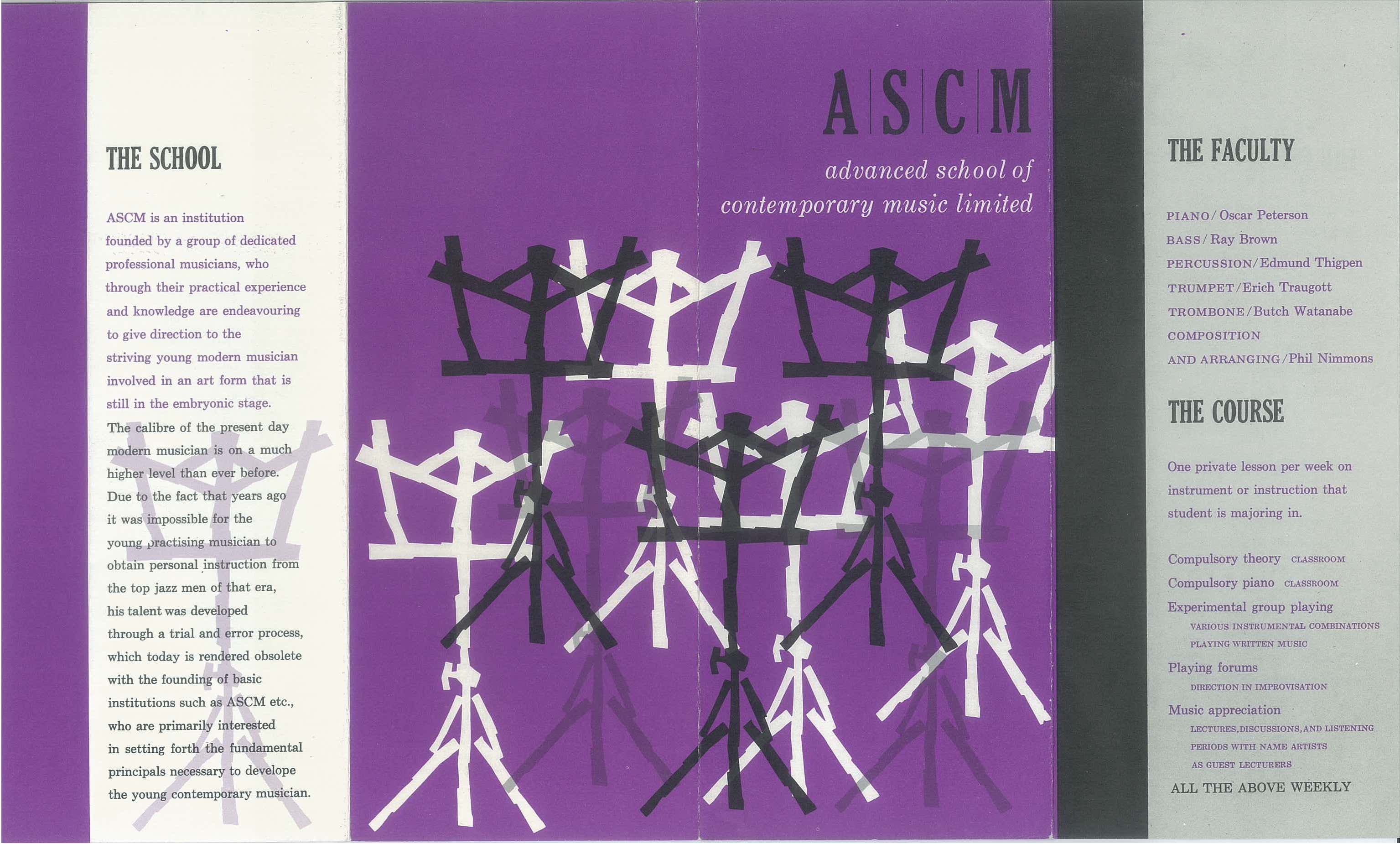
This brochure advertises Oscar Peterson's Advanced School of Contemporary Music Limited, which he opened in 1960s Toronto as a way for young music students to formally study jazz music.
A Teacher and a Performer
By its second semester, the Advanced School of Contemporary Music had grown to over 50 students. Many jazz musicians who were in town to play a gig would stop by the school to visit and give a lesson, such as Benny Goodman, Jimmy Guiffre, and Dizzy Gillespie.
Although Peterson believed in his school and his role as a teacher, he still was one of the top performing jazz pianists in the world. Peterson was called away from the school often for teaching and recording commitments. Recognizing that he could not do both jobs, Peterson closed the ASCM in 1964.
Peterson continued to teach after the ASCM closed. He published a series of Jazz Exercises and Pieces for the Young Jazz Pianist. In the 1980s, he taught at York University as a Professor of Music; he served as chancellor for the University from 1991 to 1994.
There is a growing need for professional jazz instruction and a great future for it...The jazz field is bigger now. More musicians want to be equipped with jazz knowledge.
—Oscar Peterson
Listen: Hymn To Freedom
During the 1960s, Oscar Peterson’s flourishing musical career coincided with the growing civil rights movement in the United States. Peterson experienced segregation and racism first hand while touring in the US. He often was unwelcome at local restaurants and even harassed by local law enforcement.
Later, Peterson dedicated his time to injustice and civil rights all over the world. He joined the choir for the charity single “Tears Are Not Enough” to raise money for the 1983-1985 famine in Ethiopia. Oscar was also a member of Artists Against Racism, a campaign meant to educate the public and eradicate racism.
Peterson composed and released this song, "Hymn to Freedom", in 1962. It became an anthem of the Civil Rights Movement.
This online exhibition uses third-party applications including Spotify and YouTube. Check with your organization’s web administrator if you are unable to access content from these channels in the exhibition.
Watch: Welcome to the SkyDome
On June 3, 1989, Oscar Peterson helped Toronto mark the official opening of the SkyDome, the world's first stadium with a retractable roof. The opening ceremonies for the stadium now known as the Rogers Centre were a star-studded list of notable Canadians, including then-premier David Peterson.
Oscar Peterson was a featured performer as part of the opening festivities, playing on a large stage in the middle of the stadium. He played a special composition he wrote particularly for the event, "Prelude to Forever."
This online exhibition uses third-party applications including Spotify and YouTube. Check with your organization’s web administrator if you are unable to access content from these channels in the exhibition.

Watch as Toronto gathered to celebrate the opening of the SkyDome in June 1989. The opening festivities included the first official opening of the SkyDome's world-famous retractable roof and included a who's who of Canadian musicians and politicians. Oscar Peterson appears on screen at 3:48 to perform as the roof opens for the first time. Please note: this third-party video does not provide closed captions. Courtesy of Ed Conroy, Retrontario
View Transcript[Music]
Ladies and gentlemen, the premier of Ontario, the honorable David Peterson ladies who titled him this sky dome opening tonight is the culmination of the vision and hard work of thousands of Canadians. Tonight. I would like to mention gratefully six Paul Godfrey, the former Metro chairman, my predecessor, Bill Davis, former premier of the province of Ontario. Mr Trevor Reagan, who brought the private sector into the Skydome.
Mark Connell, the chairman, who brought the private and public sectors together and a model of cooperation and Chuck Magwood who built this guy dome just in the nick of time the Skydome will stand as a symbol of this city, of this province and of this country. It is bold. It is daring.
It is imaginative. It serves all of the people. And it is unique in the world. Ladies and gentlemen, I'm very proud to dedicate this SkyDome to the people of Canada.
[Music]
Ladies and gentlemen, with the Toronto Symphony conducted by Rick Wilson, performing his composition specially written for the opening of Skydome, the uncomparable Oscar Peterson, Prelude to Forever.
[Jazz Music]
Ladies and gentlemen, "Prelude to Forever" composed and performed by Oscar Peterson behind me, they are announcing that the roof will be closed and I'm sure you'll hear the boos. Apparently there is a lightning storm in the area and they are not able to completely open the roof. We do have a look at the CN tower though.
The guess on how long it would take to open the roof was anywhere between 37 and say 50 minutes, but as of right now. The roof was open the little way it is going to close back because of the rain and the lightening storms in the area. Stay with us. Dave Thomas will join me here in the booth at 80 and actor and comedian. When we returned to the Skydome celebration.
Global Recognition
Peterson was inducted into the Canadian Music Hall of Fame in 1978. He was also the first recipient of the Governor General's Performing Arts Award for Lifetime Achievement in 1992.
In 1993, Oscar Peterson suffered a stroke that severely limited the use of the left side of his body and thus his ability to play. Peterson worked with physiotherapists and played mainly with his right hand. Previously dubbed “the man with four hands,” having limited use of his left hand was not too much of a problem.
By the time of Peterson's passing in 2007, Peterson was regarded as a jazz legend, both in Canada and throughout the world. In 2010, Queen Elizabeth II unveiled a statue of Oscar Peterson in Ottawa to commemorate his contributions to Canadian music.
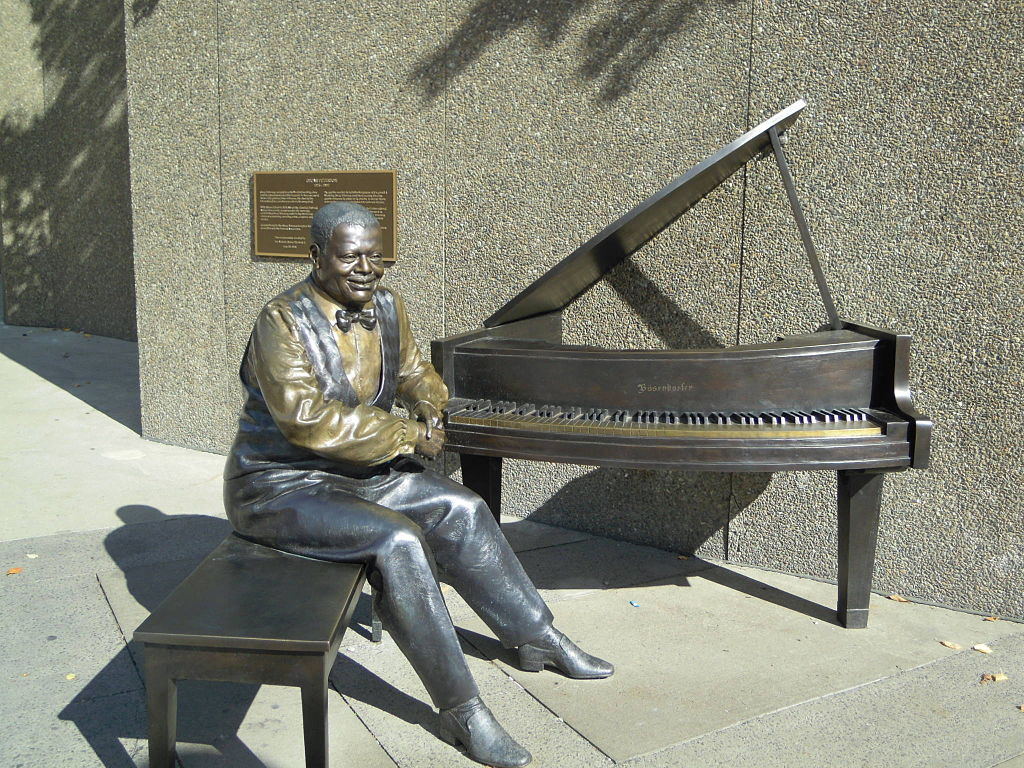
A bronze statue of pianist Oscar Peterson sits on Elgin Street at the National Arts Centre, Ottawa, Canada. Designed by Canadian sculptor Ruth Aberneth, the statue was designed to be approachable, with space on the bench next to Peterson so visitors can sit down beside him. The sculpture’s piano has 97 keys (as opposed to the usual 88) to represent Peterson’s musical inventiveness.
Photo by Skeezix1000, licensed via Creative Commons
If you were to ask me who the next Oscar Peterson will be, I really don't know. I am aware of exerting some influence on some of the young pianists, but I believe in the individual.
— Oscar Peterson
Dive Deeper
Jack Batten. Oscar Peterson: The Man and his Jazz. Toronto : Tundra Books, 2012.
Gene Lees. Oscar Peterson: The Will to Swing. Lanham, MD: Cooper Square Publishers Inc., 2002.
Oscar. Directed by Marie-Josée Saint-Pierre. Montreal: National Film Board, 2016.
Oscar Peterson. A Jazz Odyssey: The Life of Oscar Peterson. Edited by Richard Palmer. New York: Continuum, 2002.

